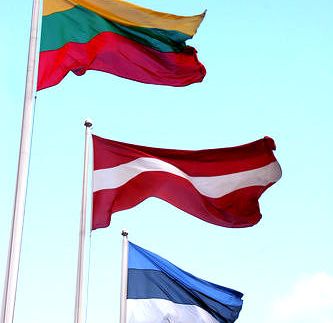More than two decades after the end of the Soviet occupation, and eight years after they joined NATO and the European Union, the Baltic republics remain disintegrated from the rest of Europe in one crucial way: their natural gas infrastructure isolates them into “energy islands.” But, for the first time in their histories, Estonia, Latvia, and Lithuania now have a chance to secure their energy independence by connecting their natural gas systems with those of their European allies and evolving them into market-based trading systems.
This will require the Baltic republics to work with their EU Allies to develop physical and regulatory infrastructure required for liquid trading hubs and spot-market pricing of natural gas to emerge in the Baltic region. By achieving these objectives, these three small countries on the EU’s periphery will help the EU achieve two key strategic goals: to establish a single European energy market; and to complete the full integration of the EU’s easternmost member states into a Europe that is whole and free.
As a Soviet-era legacy, the natural gas networks of Estonia, Latvia, and Lithuania are supplied only by Gazprom through links to the grids of Belarus, Russia’s Kaliningrad Oblast, and mainland Russia; projects that will connect the Baltic allies to their European Union Allies remain either in the “proposed” or “projected” phases. The isolation of the Baltic states from the EU’s natural gas networks is incompatible both with these states’ individual economic needs and with the EU’s collective vision of a unified European energy market.
The economic impact of the Baltic states’ dependency on a single natural gas supplier can be considerable, as Lithuania has experienced. In 2012, Gazprom flexed its monopolistic muscles by charging Lithuania $497 per thousand cubic meters (tcm) of natural gas—over 15% higher than the $431.30 it charged Germany, whose considerably greater distance from Russia’s border should result in a higher price to cover transportation costs. Moreover, the average price Gazprom charged its European consumers was only $381, or 30% higher than in Lithuania. Gazprom’s price-gouging in Lithuania reflected Moscow’s attempt to punish Vilnius for proceeding with EU directives to reduce Gazprom’s monopoly power and prepare for a unified EU energy market by the end of 2014. Gazprom Vice President Valery Golubov explained, “Vilnius’s inadequate behavior while restructuring the gas sector, and trying to separate the gas transmission pipelines from SC Lietuvos Dujos [Lithuania’s gas transmission and distribution company, of which Gazprom is the dominant shareholder]” justified the price increase.
In addition to unilateral price hikes, dependency on a single monopolistic gas supplier can also lead to supply interruptions, which, in the dead of winter, can prove politically disastrous for national leaders and even deadly for consumers. In Estonia, for example, during peak winter gas demand, restrictions on the Russian side of the transmission system can render the Narva and Värska cross-border points inactive, as Gazprom strains to meet demand in St. Petersburg and northwest Russia — and gas stops flowing into Estonia. According to the contract between Gazprom and Eesti Gaas (Estonia’s gas importer and distributor, in which Gazprom holds a plurality stake), under such circumstances, Estonia is forced to rely exclusively on the underground gas storage (UGS) facility at Inčukalns, Latvia, which Gazprom also controls. Since the facility has limited sending capacity during times of peak demand, and since the gas interconnection between Latvia and Estonia cannot deliver more than 6-7- million cubic meters (mcm) per day, Estonian consumers can face cutoffs when they are most vulnerable. This came close to occurring in 2006 when frigid weather pushed Estonian gas demand to almost 7 mcm/day.
The risks of gas price hikes or cutoffs also provide Moscow significant geo-economic and geopolitical leverage, which it has not shied from using against the Baltic republics and other EU members. Hence, the perpetuation of such “energy islands” poses a threat not just to the energy security of the Baltic states, but to their national security as well.
Matthew Bryza is senior fellow with the Council’s Patriciu Eurasia Center and current director of the International Centre for Defense Studies in Tallinn, Estonia, where Emmet Tuohy is a research fellow. This piece is an excerpt of a longer report: Connecting the Baltic States to Europe’s Gas Market.
Image: Baltic-States-flags_0.jpg
